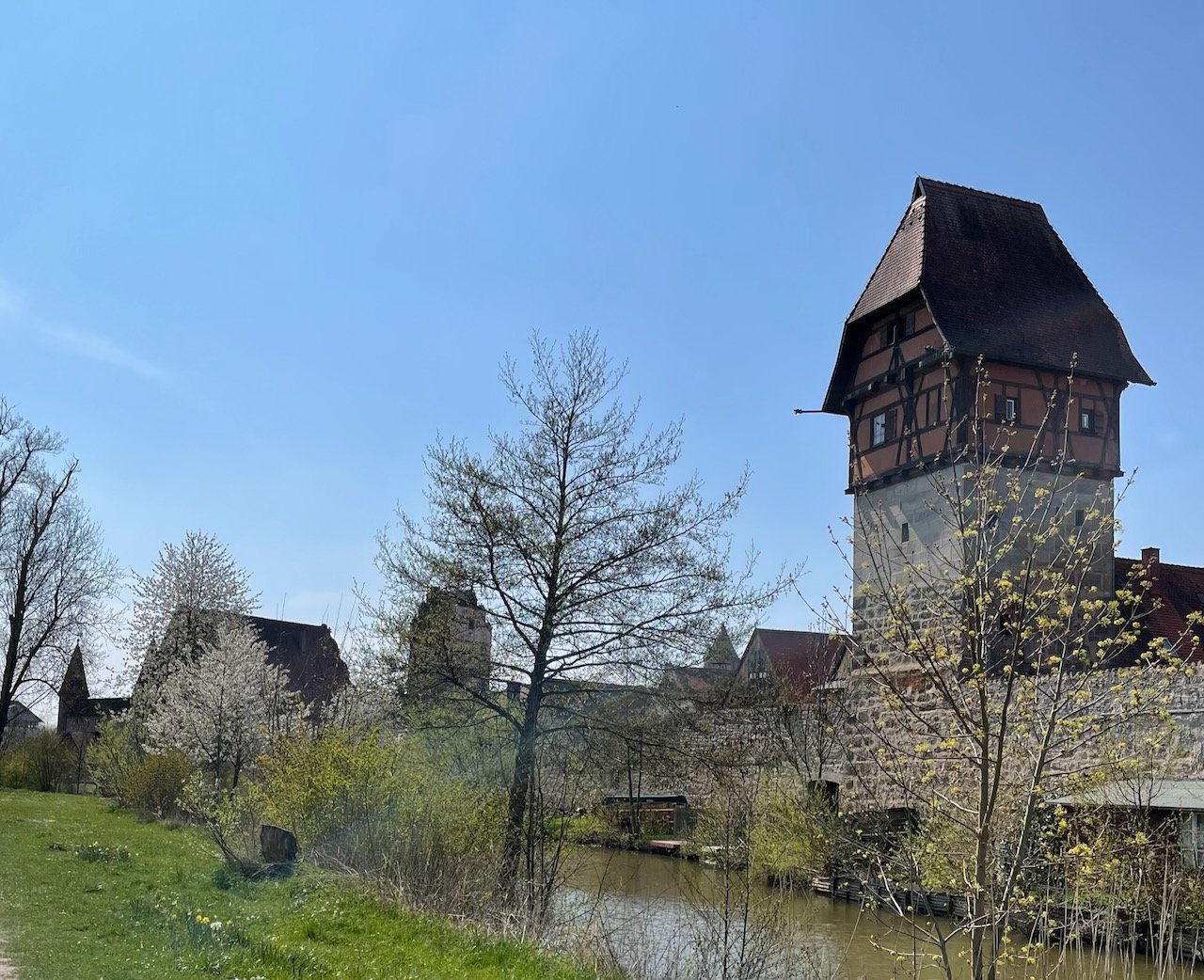Dinkelsbühl
My grandfather, born Hans Daniel Ostertag in 1915 in Stuttgart, Germany, naturalized as Harry Oster in the US in 1935, went back to Germany in the US Armed Forces as a Ritchie Boy in 1943, and from what I understand, he pretty much rejected all things German during the rest of his life. He only spoke German with his mother, but not with customers in his store. I don’t remember who told me, but I recall hearing that when a customer would speak to him in German, he would respond in English and say, “We speak English here.” He came with almost nothing from Germany. Owning a small neighborhood grocery store was not a particularly lucrative occupation. He had few possessions of significant material value. I have a few of this things…a pocket watch (one of my prized possessions), a pocket knife, some magnets he gave me when I was little and a framed cityscape that he brought with him from Germany. Or perhaps his mother, Elsa (nee Schwarzschild) Ostertag brought it with her and she gave it to him. Regardless, if you can only bring a few things that you can carry, or fit in your suitcase, on a journey to a new life, I imagine that what you bring has meaning or intrinsic value. So why did he/she bring this?
It is signed, but I have not deciphered what it titled nor the artist. I did however, with the help of the Facebook genealogy sleuths, figure out what the scene is. It is the watchtower in the wall of a city called Dinkelsbühl. Only 35 Km from Oberdorf, it was on our way to Hörstein on our last full day in Germany.
Dinkelsbühl is a completely preserved and working walled Medieval city and is on the official “Romantic Road Tour.” It was very cool to see. All German mountain towns were starting to look the same to us, but this is a large city compared to the villages we have been in.
I have no idea why Grandpa Harry kept the drawing. Or why Elsa, his mother did. I have three working theories, but no reason to believe any of them are correct.
Perhaps there was Ostertag history in Dinkelsbühl. The furthest back I have found, and can materially place someone in a particular location, is Joseph Ostertag who was born and died in Oberdorf. His headstone mentions his father, Pesach Abraham Ostertag who would have been born around 1760. Joseph was born in 1788. But it doesn’t say where Pesach was born or lived. Perhaps he came from Dinkelsbühl.
Maybe Harry was in Dinkelsbühl at some point during the war and this was a memento.
If Elsa (nee Schwarzschild) Ostertag, Harry’s mom, kept it and it just came to be in Harry’s possession when she died, maybe it has something to do with her branch of the family. Elsa, my Great-Grandmother has so far been a brick wall. I know about her brother Siegfried who died in Auschwitz. I also know that distant cousins who Elsa probably never herself met in person, petitioned for Harry’s immigration in 1937. But her family is just largely missing from the record.
I have not spent a lot of time on Dinkelsbühl other than finally figuring out what cityscape is in the drawing. So I will need to do some more looking there. In the meantime, we enjoyed it there for a few hours and it was fun to see the object of the art in real life.



